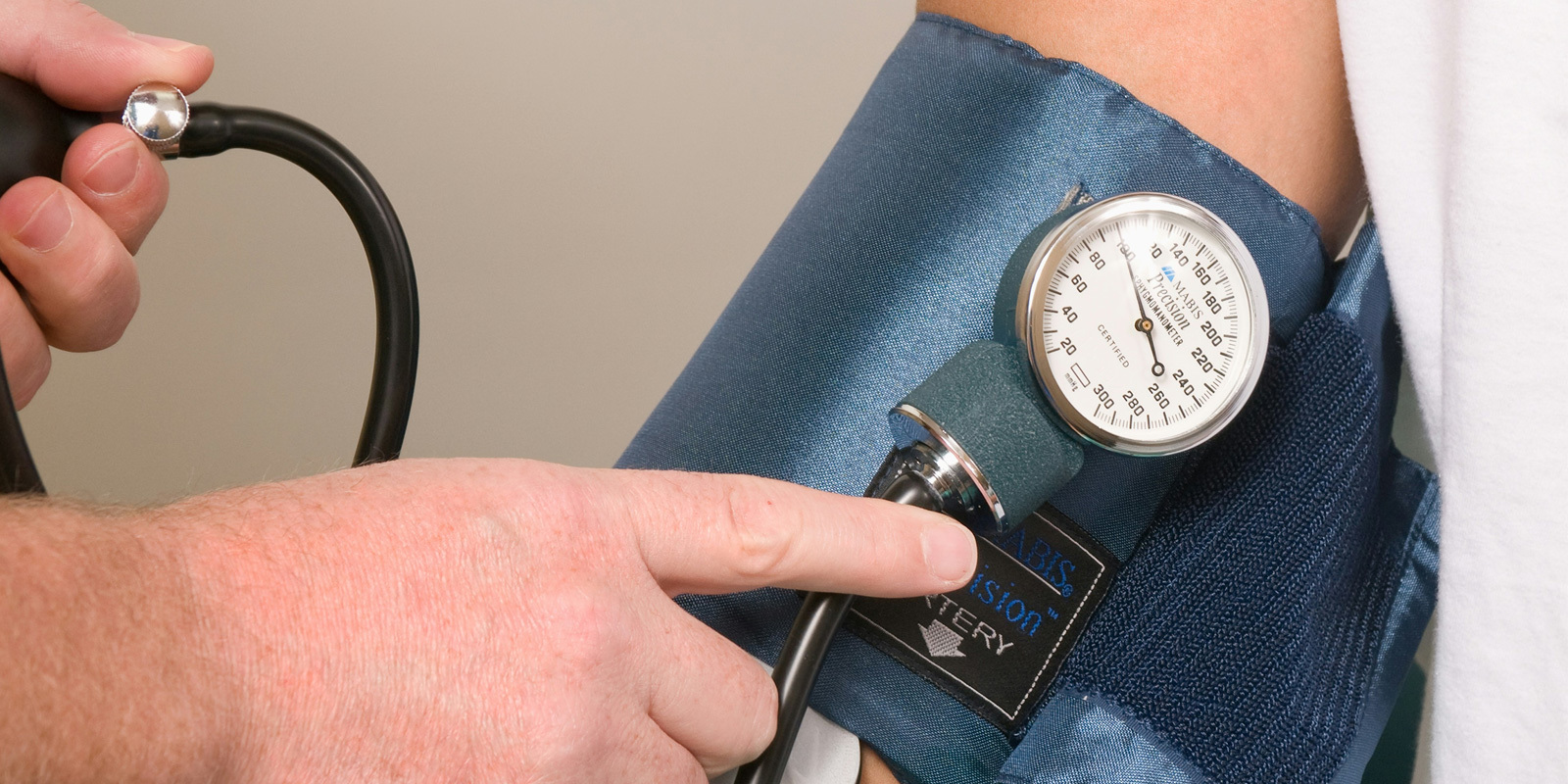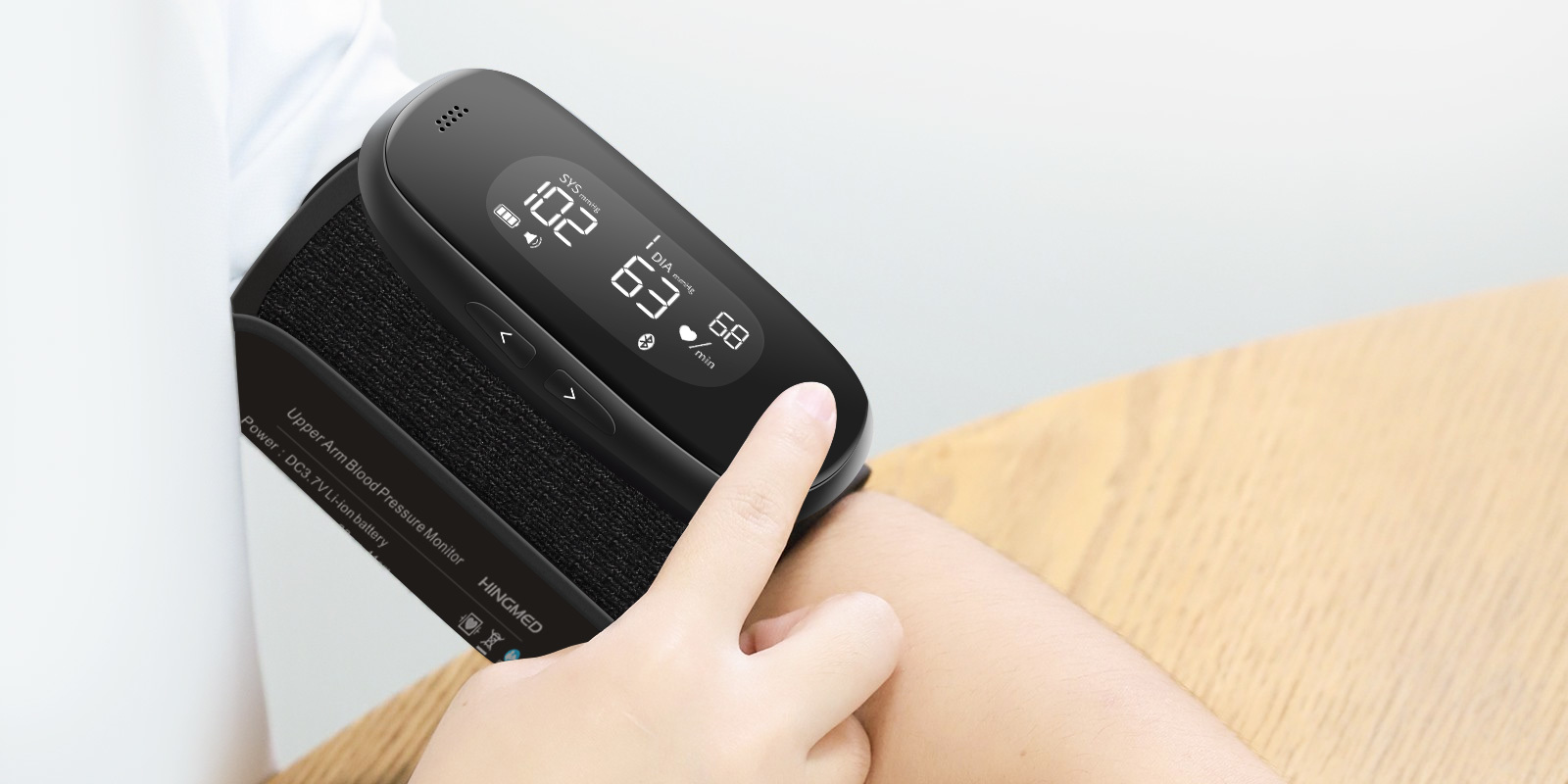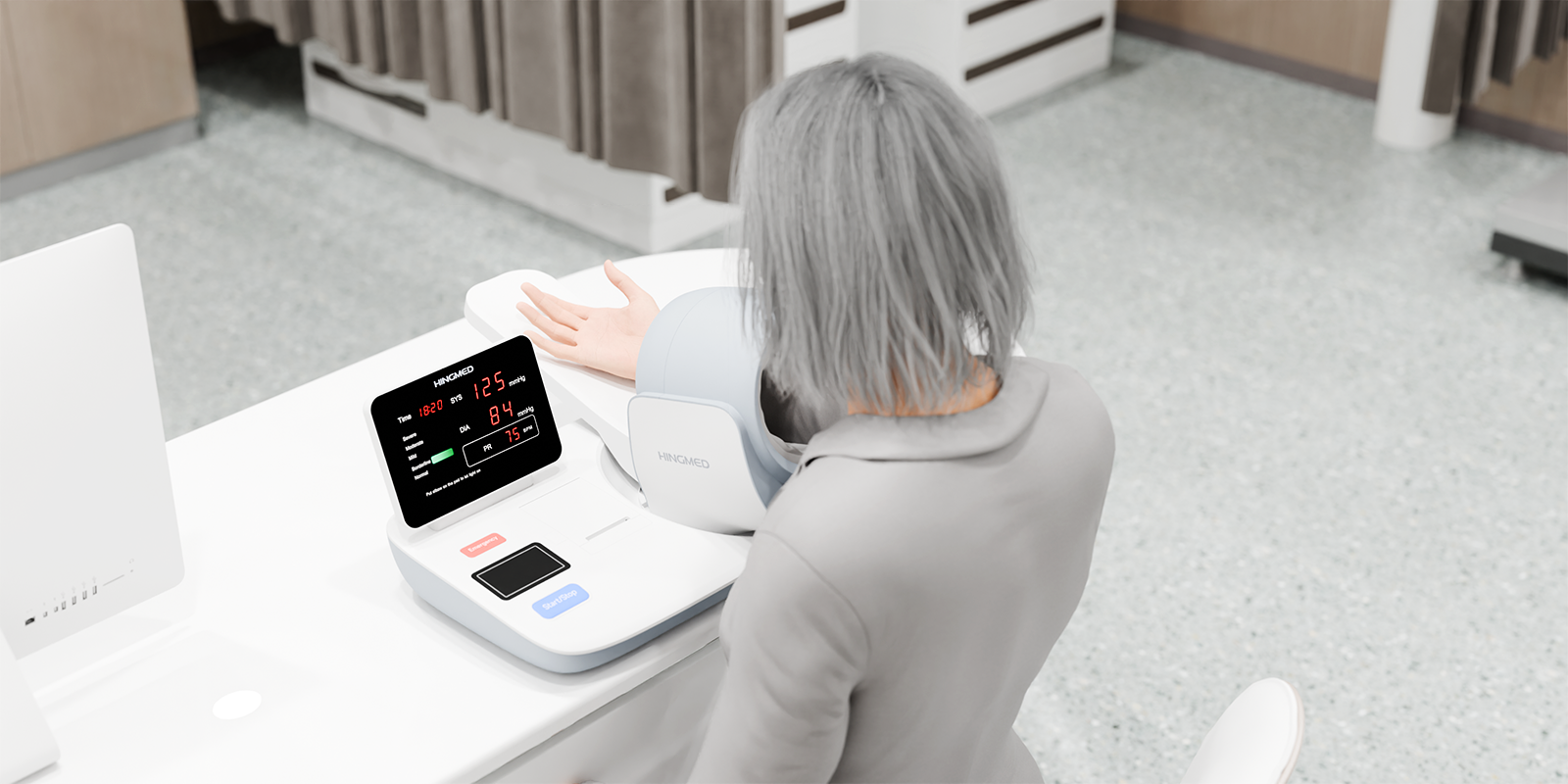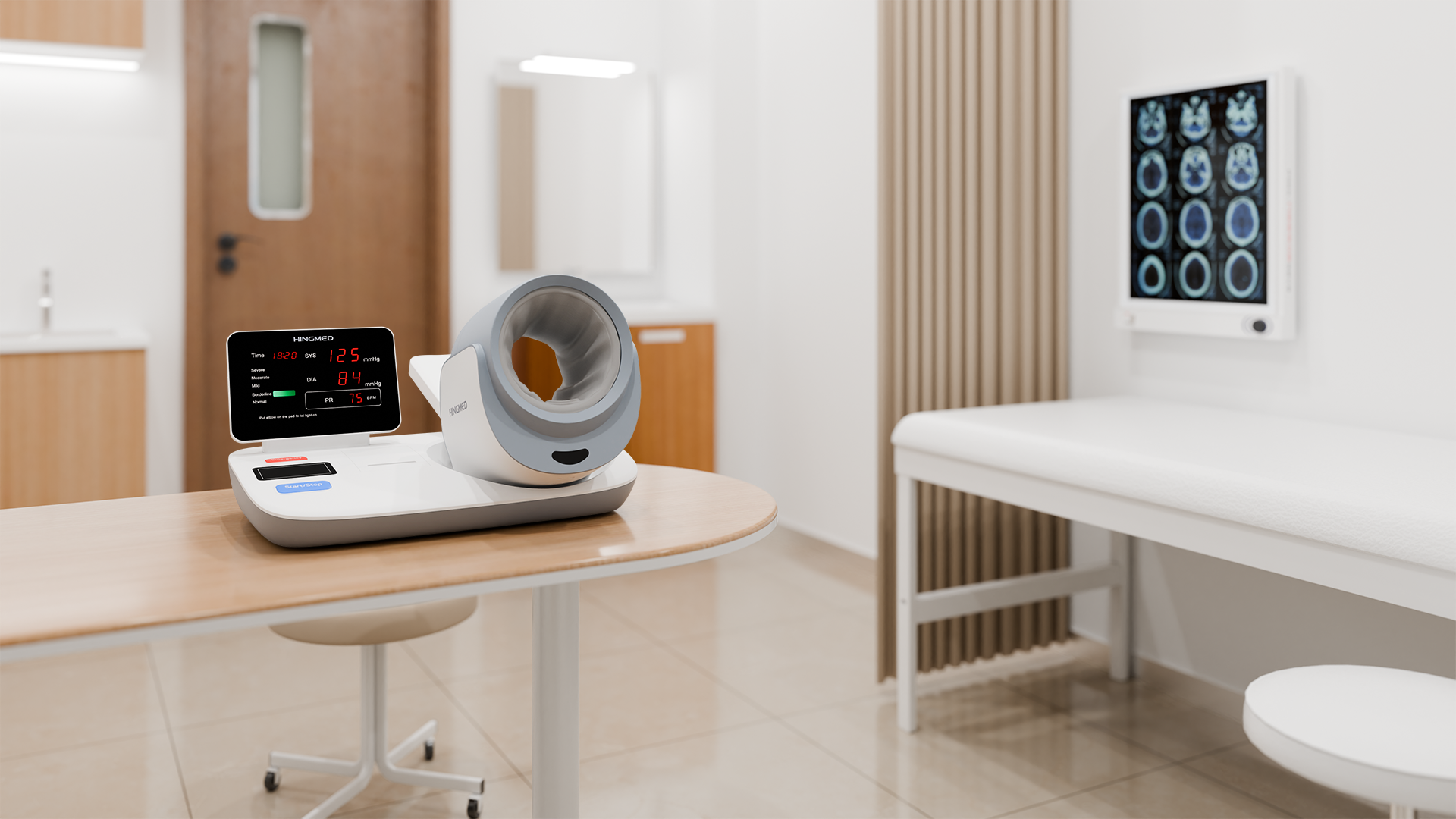All Categories>
Is an Oscillometric Blood Pressure Monitor Right for You?
Apr 08,2024
An oscillometric blood pressure monitor is a machine that checks how strong your heart is pushing blood through your body. It’s like a robot doctor’s arm that wraps around your arm. It doesn’t hurt. The monitor squeezes your arm gently to measure your blood pressure. It uses small vibrations (oscillations) to find out how hard your blood is pushing against your artery walls. Then, it shows two numbers on a screen.
One number is for when your heart beats (systolic pressure), and the other is for when your heart rests (diastolic pressure). This helps doctors know if your blood pressure is normal, high, or low. You might see one of these monitors at the doctor’s office or even have one at home. It’s an easy way for doctors to keep track of your heart’s health.

What are the features of an oscillometric blood pressure monitor?
An oscillometric blood pressure monitor is a handy device used to check how well your heart is pumping blood. With its easy-to-use features and digital display, it helps keep track of your blood pressure levels accurately. Here are the different features of an oscillometric blood pressure monitor.
• Oscillometric blood pressure monitors automatically inflate and deflate the cuff to measure blood pressure without manual intervention.
• Designed for ease of use, oscillometric monitors often have simple buttons and intuitive interfaces.
• They typically feature a digital display that shows systolic pressure (when the heart beats) and diastolic pressure (when the heart rests) readings.
• Many oscillometric monitors store previous readings, allowing users to track changes in their blood pressure over time.
• They come with various cuff sizes to accommodate different arm circumferences, ensuring accurate readings for individuals of all sizes.
• Some advanced models may include a risk indicator feature, which categorizes blood pressure readings into low, normal, high, or hypertensive ranges.
• Some models have a feature to detect irregular heartbeats, providing a warning if an abnormal heart rhythm is detected during measurement.
• Many oscillometric monitors are battery-operated, providing portability and convenience for use at home or on the go.
• Users can often adjust settings such as date, time, and measurement units (e.g., mmHg or kPa) to suit their preferences and needs.
• Some models allow for multiple user profiles, enabling different individuals to track their blood pressure separately.
Are oscillometric blood pressure monitors easy to use?
Oscillometric blood pressure monitors are easy for everyone to use. They have simple instructions and easy-to-use screens. You put the cuff on your arm, press a button, and wait for the numbers to show up. The numbers tell you about your blood pressure, like how hard your heart is working.
Lots of oscillometric monitors do things automatically, like blowing up and letting the air out of the cuff. This makes it easier because you don’t have to do it yourself. It also means there’s less chance of making mistakes. Some monitors remember your past readings, so you can see how your blood pressure changes over time without having to remember or write anything down.
The cuffs on these monitors can be changed to fit different arm sizes, so they feel comfy when checking blood pressure. They’re made this way to make sure the measurements are just right. These monitors are easy to use, with clear directions, and they’re helpful for keeping track of heart health at home or at the doctor’s office.

Is it possible to use oscillometric blood pressure monitor at home?
It is possible to use an oscillometric blood pressure monitor at home. These monitors are designed to be easy to use by anyone, so you don’t need to be a doctor to use one. You can buy them at many stores or online.
Once you have it, you just follow the simple instructions to wrap the cuff around your arm and press a button. Then, the monitor does all the work, measuring your blood pressure and showing the numbers on a screen.
Using a blood pressure monitor at home is a great way to keep track of your heart health between doctor visits. It lets you see if your blood pressure is staying in a healthy range, and if not, you can talk to your doctor about it.
Also, it’s convenient because you can check your blood pressure whenever you want, without having to make a special trip to the doctor’s office. So, if you’re looking to take charge of your health, getting an oscillometric blood pressure monitor for home use is a smart idea.
What are the benefits and drawbacks of using oscillometric blood pressure monitors?
Oscillometric blood pressure monitors offer convenience and accuracy for monitoring heart health. However, they also have drawbacks, including potential inaccuracies and limited understanding by users. Understanding both the benefits and drawbacks is essential for effective blood pressure management.
Benefits
• These monitors are simple and straightforward to operate.
• The cuffs are adjustable for a comfortable fit on your arm.
• You can check your blood pressure at home without visiting a doctor.
• They provide precise measurements of your blood pressure levels.
• Some monitors store past readings, allowing you to track changes over time.
• Some monitors can store readings for different people in the household.
• Most models have clear instructions and easy-to-read displays.
• They are often battery-operated, so you can use them anywhere.
• They can alert you to irregular heartbeats, a sign of potential health issues.
• Regular monitoring promotes awareness of your heart health and encourages proactive measures to maintain or improve it.

Drawbacks
• Readings can change if you put the cuff on wrong.
• You need to change or charge the batteries often, and if they die, you can’t use the monitor.
• People might not understand what the numbers mean, so they might think they’re healthier or sicker than they really are.
• Good monitors can cost a lot, which means some people might not be able to afford them.
• Sometimes, the monitor might not catch serious heart problems, which could cause delays in getting help.
Is oscillometric blood pressure monitor accurate?

These monitors can be right most of the time, but not always perfect. If you move or put the cuff on wrong, the number might not be exactly right.
Sometimes, if you don’t use it the right way, it can give the wrong number too. But if you use it like you’re supposed to, it can give a pretty good idea about your blood pressure. Just remember to sit still and follow the instructions carefully.
To get the best result, follow the rules and don’t move when using the monitor. If you’re worried about the numbers, talk to a doctor. They can help you understand and make sure your heart is healthy.
Conclusion
Oscillometric blood pressure monitors are easy to use and don’t need anything extra into your body to check your blood pressure. People like them because they’re easy to use and give accurate results. Hingmed is one of the best companies making these monitors.
They make sure their devices meet high standards and are reliable. Because Hingmed focuses on making better and more precise monitors, people can rely on the readings they get. As technology gets better, these monitors will become even easier to use and help more people around the world stay healthy.















